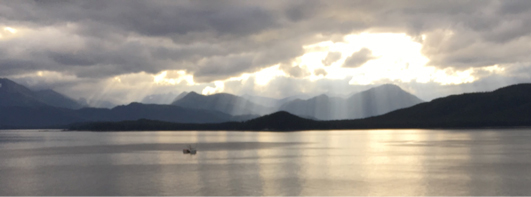Have you ever been to Alaska? Do you live there? If so, you know the beauty and splendor of America’s largest and 49th state. We all learned in grade school that Alaska is the largest state of the union, larger than Texas, California, and Montana combined!
In August, I had a unique opportunity to travel to Alaska via cruise ship with some fellow opticianry professionals. After visiting Glacier Bay, I made some associations between opticianry, glaciers, and Alaskan wildlife.
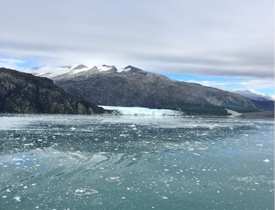 Glaciers and icebergs differ. Icebergs form when large chunks of ice break off from glaciers. Icebergs travel with the ocean’s current. Glaciers on the other hand, are formed by fallen snow that transforms into ice after a long period of time. What makes glaciers unique is that they move and flow like very slow rivers.
Glaciers and icebergs differ. Icebergs form when large chunks of ice break off from glaciers. Icebergs travel with the ocean’s current. Glaciers on the other hand, are formed by fallen snow that transforms into ice after a long period of time. What makes glaciers unique is that they move and flow like very slow rivers.Opticianry is like a glacier in a few ways. Our profession is large and strong and we move; often very slowly. Glaciers affect people as they provide drinking water and irrigate crops. Opticians provide solutions for good vision, and help people perform, look and feel their best.
Besides viewing glaciers, I had the delight of viewing humpback whales and sea otters in Glacier Bay. Humpback whales journey from Hawaii to Alaska like clockwork each year. Whales are mammals, they breastfeed and, unlike fish, whales cannot get oxygen from the water and need to surface to breathe in air. It is amazing to see a whale blow air from its blowhole! This occurs when a whale surfaces to empty its lungs and breathe fresh air in again. Whales represent the larger entities in opticianry such as managed care and online sales. We need to empty our optical lungs from old ways of thinking and performing, and breathe in new ideas. We must stay on top of trends and technology to be able to perform well on our optical journey.
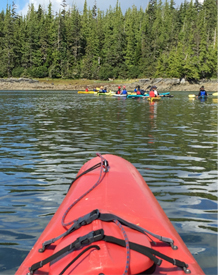 The sea otters are so much smaller than the whales and represent the independent optician, as they are small but mighty. Sea otters can dive more than 300 feet to forage for food! Additionally, besides primates, sea otters are some of only a few mammals that use tools for survival. They are known to use rocks to break shells away from rocks, then hammer them to pry them open for food. Sea otters remind me of the independent optical as they are resourceful, and use their entrepreneurial spirit and ingenuity to stay strong and successful in our field.
The sea otters are so much smaller than the whales and represent the independent optician, as they are small but mighty. Sea otters can dive more than 300 feet to forage for food! Additionally, besides primates, sea otters are some of only a few mammals that use tools for survival. They are known to use rocks to break shells away from rocks, then hammer them to pry them open for food. Sea otters remind me of the independent optical as they are resourceful, and use their entrepreneurial spirit and ingenuity to stay strong and successful in our field..
I kayaked in 380 foot waters that are home to the visiting humpback whales, orcas, and other sea creatures. The deep waters and vast Alaskan terrain remind me of how deep and vast our profession is and that there are enough people in the world in need of visual correction for us all to take part. We come from various industries in optical but, in the end, we are here to serve our patients well.
If you visit the U.S.Department of the Interior’s National Park Service page on Glacier Bay National Park, you will see how they describe this precious area of land. “It is a land reborn, a world returning to life, a living lesson in resilience. If ever we needed a place to intrigue and inspire us, this is it.”
The rainbow I saw after visiting Glacier Bay was a reminder that opticianry is a profession returning to life with committed and open minded professionals willing to work together. We, too, are a living lesson in resilience. With changes in technology and professional responsibilities, we can and will work together to help people see and look their best.
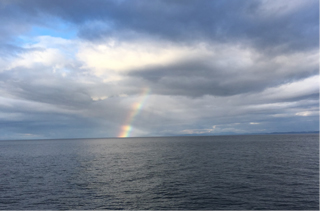 | 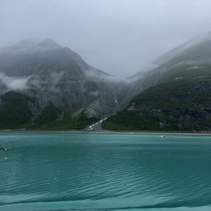 |
